The A-J Bomber
The A-J Bomber was a 5 cent balsa glider by Jim Walker's American Junior that eventually led to the development of the "74" Fighter. Here we give you a little historical background.
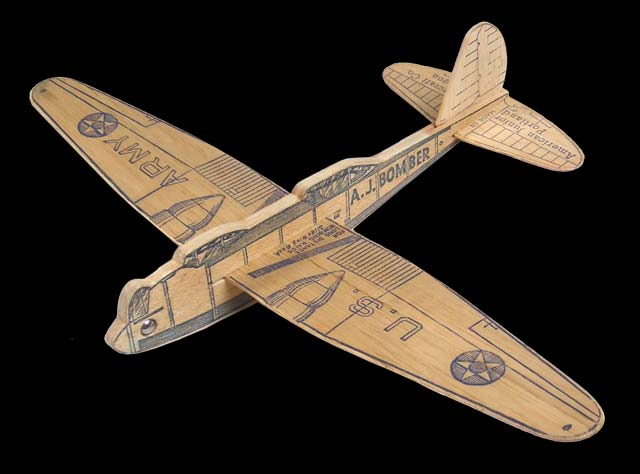
Regarding the A-J Bomber, here's a little known historical fact as to why and how it came about. The first Japanese "invasion" began in 1933 when the country was in the grip of the Depression. Money for toys was non-existant. Yet what market existed for toys at the time, was threatened by a flood of Japanese imports.
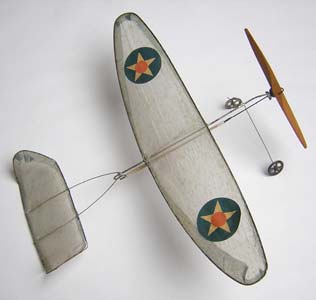 |
 |
These were flying models of wire construction with the wings and tail surfaces attractively covered with pure Japanese silk. They were rubber powered with beautifully carved wood props. These models retailed for 5 cents and sold at every Five and Dime Store across the land like Kress, Woolworth's, and Rodgers'.
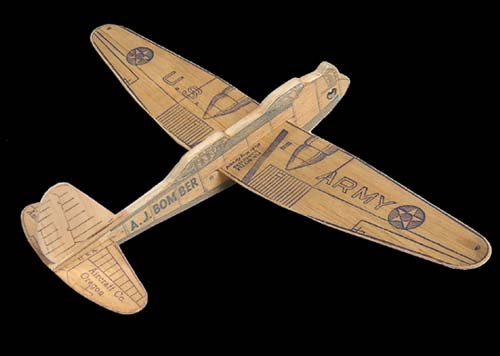 |
The competition from Japan was really hurting the American Junior Aircraft Company and according to Jim Walker, something had to be done, fast. The brand new Martin B-10 was the popular design at the time and was chosen for the new model design. This became known as the A-J Bomber glider, which retailed for a nickel in 1937. |
It was made of light weight balsa wood, with a 12-1/4 inch wing span with steam formed airfoiled wings and could perform 17 different stunts by any boy or girl in the land. On top of that, it was made in America by American Junior for American Junior flyers. It was highly successful and continued as the most sought after glider well into WW2.
|
Well into the war, the B-10 Bomber was an obsolete aircraft, so American Junior updated their glider design based on the P-39 Airacobra. They called the new glider the Americobra. The Americobra flew well and its production continued until the advent of the famous "74" Fighter in 1947. |
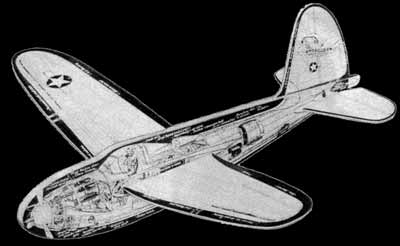 |
The Americobra
was the same size as the A-J Bomber, even though the P-39 was a much smaller aircraft than the B-10. One side of the fuselage was printed with the exterior details of the real plane. The other side of the fuselage, along with the wing and tail surfaces, revealed the inner structure in a ghost image.
|
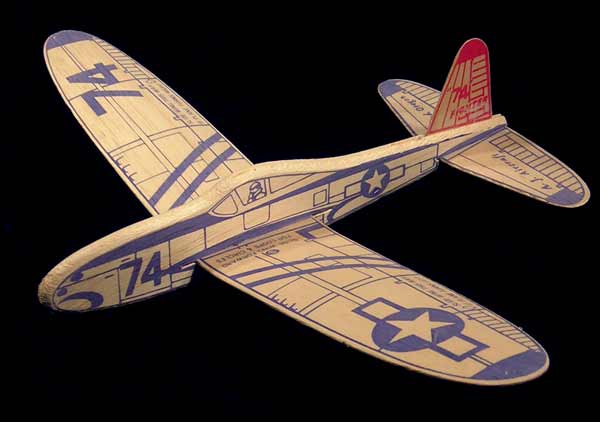
The "74" Fighter was Jim Walker's favorite balsa exhibition model. He could amaze crowds with his stunts. Frank Macy tells of seeing him flying three at a time: one to the right, one to the left and a third one straight up and looping between his legs. He would keep these flying in the air, just like a juggler, for several minutes. At the end the stunt, Jim would be wringing wet with sweat.
Home | FireWire News | Airmail Stories | Jim Walker | Contact Us
